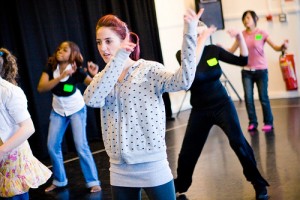Without a doubt, one of my most commonly asked questions by students of all ages is, “why don’t you play music with lyrics?” It isn’t that I refuse to play music with lyrics but for so many reasons, I find music without lyrics better supports my teaching philosophy, my mission, and my lesson plans. Here’s […]
Outside the Bubble: Encouraging Students to Develop Their Own Dance Community
Nowadays, social media is a way of life and a way of interacting in a community. Online communities provide a sense of identity, belonging, and opportunities that don’t exist in traditional communities the way they once did. Personally speaking, I find it easier to find like-minded colleagues online than in my own neighborhood. Here, I […]
“Black or White” to Black and White: Dance History and the Music Video
“The only thing new in dance is you.” A friend shared that quote from an Ohio University professor years ago and it has stuck with me. Every year I find myself chuckling to myself as I listen to kids claim movements as “their” choreography when really many are sampling from the limited palette of movement […]
The Power of Performance to Win Friends and Influence People
Preparing for a year-end performance in a school setting can add stress to an already full classroom schedule. However, it does wonders for the students and the program as you plan for the content and experiences that may actually be more important, like dance history and theory. Heather shares these wonders and some ways she prepares students for the “big show” ahead.
Careers To Consider: Teaching Americans to Love Dance in K-12
What is it like, teaching dance in public schools? Is this career right for you? Learn more about teaching in public education, the credentials you’ll need to work in this environment, and what to expect on the job from a K-12 dance educator.
History Moves: Using the Creative Process to Explore Dance History
When working with students on choreography it’s possible to get them thinking beyond steps to a more robust concept of creative process that encourages thoughtful choices about all areas of production. Heather demonstrated this with her previous article. This time, she goes a step further, showing you ways to connect these ideas with dance history to enrich students’ understanding.







